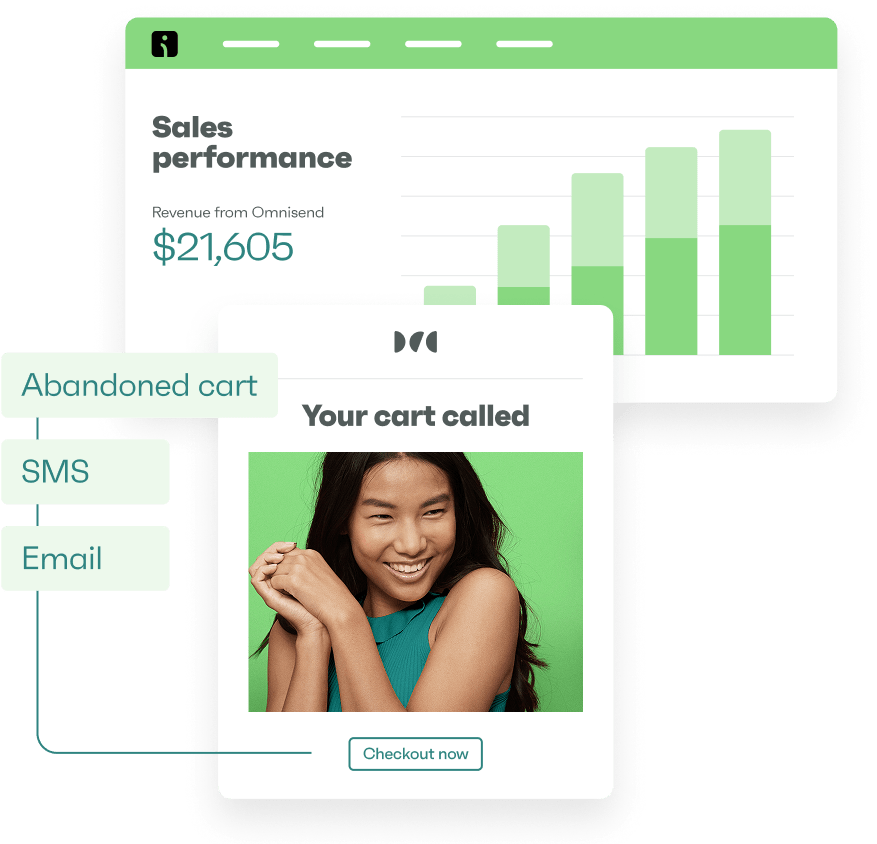Drive sales on autopilot with ecommerce-focused features
See FeaturesBusinesses face email marketing challenges that directly impact their bottom line. When your emails land in spam folders or your product announcements get ignored, you’re missing out on opportunities to connect with customers and drive sales.
Many businesses watch their open rates drop month after month. They struggle to understand why subscribers aren’t engaging with their messages.
In this guide, we’ll show you how to fix the seven biggest email marketing pain points that cause businesses to miss out on potential customers. You’ll learn how to improve email delivery, write effective subject lines that improve open rates, and set up automation to nurture and retain your customers.
We’ll cover everything from avoiding spam filters and reducing unsubscribe rates to creating personalized campaigns that drive engagement. Plus, you’ll get practical tips on measuring ROI and staying compliant with email regulations.
Quick sign up | No credit card required
What are the most common email marketing challenges?
Before we explore solutions, it’s important to understand the common email marketing challenges that businesses face. Particularly for ecommerce businesses, several key issues often stand in the way of successful email campaigns, such as:
- Poor deliverability: This ranks high among email marketing pain points, as many businesses find their messages failing to reach their subscribers’ inboxes. This happens when email service providers flag your content as suspicious or when your sender reputation takes a hit due to poor subscriber list hygiene.
- Low engagement: Even when emails make it to your subscriber’s inbox, getting them to open and interact with your emails is one of the many email marketing challenges you’ll face. This often stems from unrelated content or the wrong sending time.
- Personalization challenges: Personalization remains one of the email marketing challenges businesses can’t ignore. Customers expect tailored content based on their preferences and shopping behavior. Creating these personalized experiences requires good data management and automation tools.
- Email list maintenance: Maintaining a healthy email list poses ongoing email marketing challenges. Subscriber lists naturally decay over time when people change email addresses or lose interest. Without proper list cleaning and engagement strategies, this decay can hurt campaign performance.
- ROI measurement: Measuring success in email marketing can be tricky if you don’t know which metrics to measure. Many businesses struggle to connect their email efforts to actual sales and revenue. This makes it hard to justify investment in email marketing or optimize their strategies effectively.
- Compliance requirements: Staying compliant with various email regulations is one of the most significant email marketing challenges. This is especially true when you’re trying to grow your list and reach more subscribers across different jurisdictions.
7 email marketing challenges and how to solve them
Each challenge comes with specific solutions you can implement today. Improve your email campaign performance with these strategies:
Challenge 1: Low email open rates
Getting subscribers to open your emails is becoming harder as inboxes get more crowded. Consistently low open rates mean that your messages aren’t catching your audience’s attention or might not be reaching their primary inbox at all.
The fix starts with your subject lines. Move away from generic phrases like “Don’t miss out” or “Limited-time offer.” Instead, focus on the email content that matters to your customers.
For example, this Fitbit subject line, “Last chance to save on Ace LTE,” provides a snippet of the email content. It speaks directly to what the customer wants and what they’ll gain from it (saving money), compelling them to open the email to find out more:
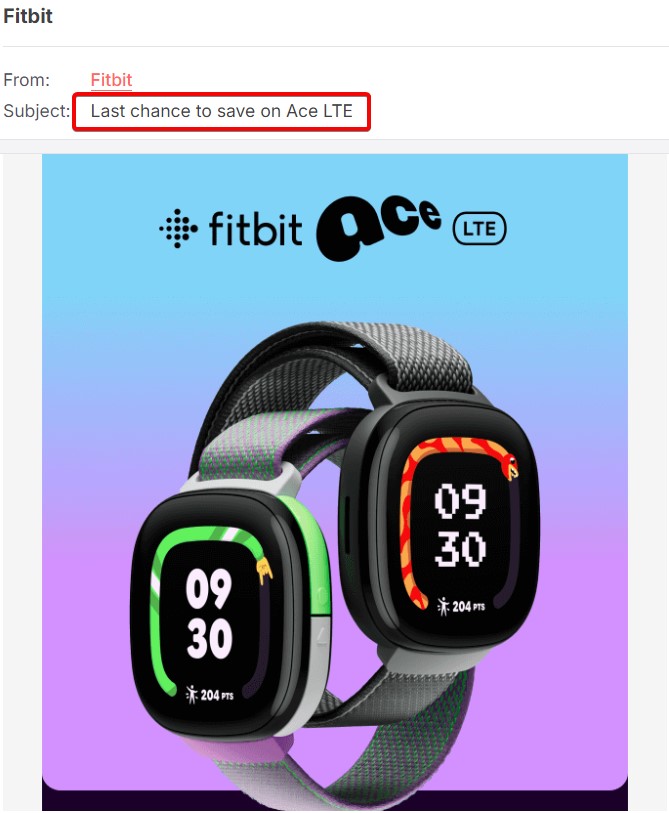
Your sender name matters just as much as your subject line. Using a consistent, recognizable sender name helps build trust with your subscribers. Whether you choose your brand name or a person’s name plus your brand, stick with it across all campaigns.
Timing also plays a crucial role in open rates. Every audience segment has its own peak engagement time. Look at your email analytics to spot patterns when subscribers are most likely to open your messages.
Some customers check their emails during their morning commute. Meanwhile, others browse during lunch breaks or evening hours. Test different email send times and use your findings to schedule future campaigns.
List segmentation is another powerful tool for boosting open rates. Break down your subscriber list based on factors like:
- Past purchase behavior
- Time since the last purchase
- Email engagement history
- Browse and cart abandonment data
When you send targeted emails to these segments, your content becomes more relevant, naturally encouraging higher open rates. This data-driven approach helps with open rates and several email marketing challenges for business owners.
Challenge 2: High unsubscribe rates
A steady stream of unsubscribes signals that something’s off with your email strategy. While some list churn is normal, having high unsubscribe rates is one of the email marketing challenges you can’t afford to ignore.
Most subscribers leave because they’re getting too many emails that don’t match their interests. A survey by ZeroBounce found that receiving too many emails is the reason why 44% of subscribers unsubscribe from an email list.
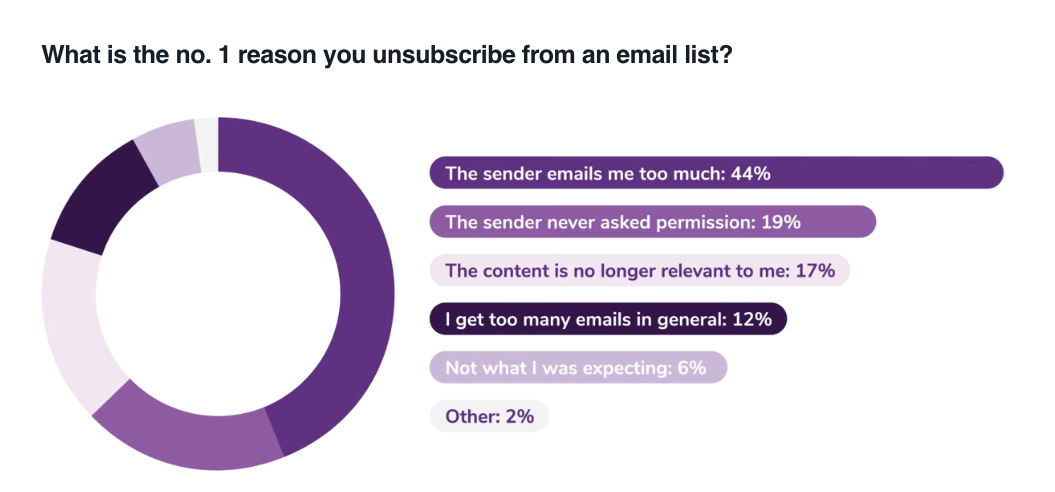
That said, the key is finding the right balance between frequency and content relevance. Instead of sending every promotion to your entire list, create a preference center where subscribers can choose what types of emails they want and how often they want to receive them.
Your sending frequency should align with your content value. If you’re sending an email series, each one needs to offer something worthwhile — whether that’s exclusive deals, helpful tips, or new product launches that match subscriber interest.
Watch for warning signs before subscribers hit that unsubscribe button. If someone hasn’t opened your last few emails, try a re-engagement campaign with special offers or ask them directly what kind of content they’d prefer.
Sometimes, simply reducing send frequency to these less engaged subscribers can prevent them from unsubscribing altogether.
Remember to make the unsubscribe process straightforward. However, you can include choices like receiving fewer emails or updating their preferences instead of only offering a complete opt-out. True Grit Texture Supply effectively does this in the email example below:
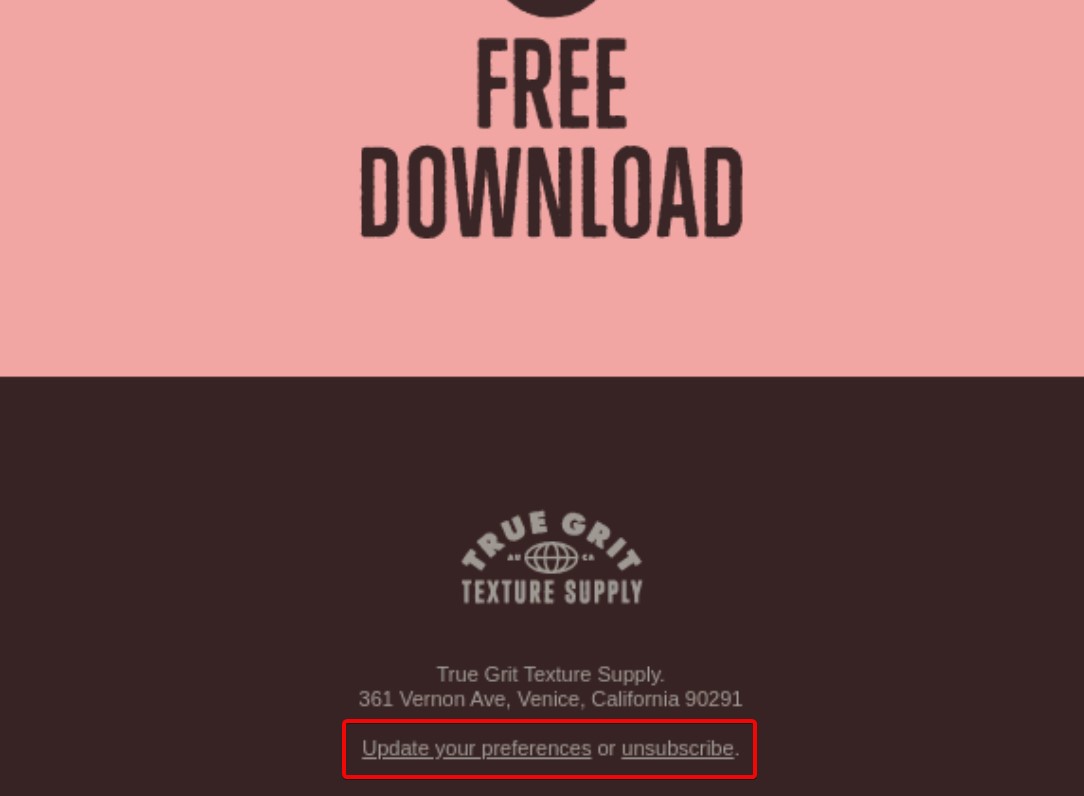
Challenge 3: Poor email delivery
When your messages start landing in spam folders instead of primary inboxes, you’re not just losing opens and clicks — you’re missing out on potential revenue.
Many businesses don’t notice delivery issues until they see a significant drop in their campaign performance.
The foundation of good email delivery starts with proper authentication. Set up these essential protocols:
- SPF records to verify your sending servers
- DMARC policy to protect your domain from spoofing
- DKIM authentication to prove your emails are sent by the domain’s owner
Keeping a healthy email list plays a crucial role in improving email delivery. Regularly remove invalid addresses, hard bounces, and long-term inactive subscribers. A clean list helps uphold your sender reputation and addresses several email marketing challenges.
Consider using separate sending domains for different types of emails. Mixing marketing emails with other types of communication can hurt your delivery.
Also, using dedicated subdomains for marketing emails, transactional messages, and customer support helps protect your overall sending reputation. Don’t forget to monitor your engagement metrics closely. Low open rates and high spam complaints can quickly damage your sender reputation.
If you notice a sudden drop in delivery rates, segment out your most engaged subscribers. While you’re working on improving your overall delivery, you can send only to them temporarily. Regular monitoring helps you catch and fix issues before they impact your revenue.
Here’s a diagram of how email deliverability works:
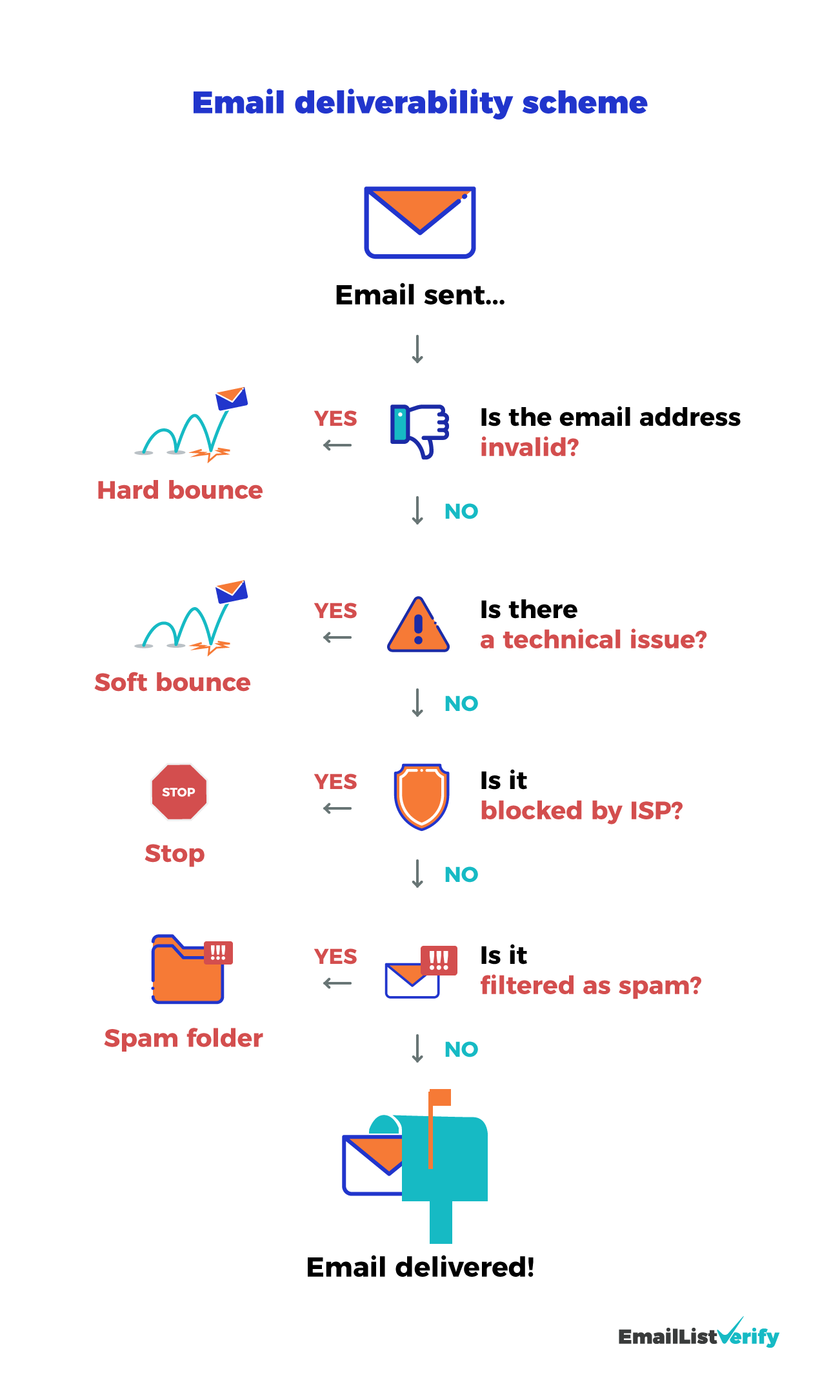
Case study
Among all email marketing challenges, delivery issues can be particularly devastating because they affect every aspect of your campaign, as 123Presets discovered when its messages started landing in spam folders.
Learn how 123Presets doubled its revenue and achieved a 600% increase in click rates by fixing its email delivery — read the full story here.
Challenge 4: Lack of email personalization
Basic personalization, such as adding a subscriber’s first name to greetings, isn’t enough to address email marketing challenges anymore. Today’s consumers expect emails that reflect their individual shopping behavior, interests, and where they are in their buying journey.
Many businesses struggle with email personalization because they’re not collecting the right data or lack the automation tools to leverage data effectively.
Start by gathering meaningful customer data points, such as:
- Browse behavior
- Purchase frequency
- Product preferences
- Customer lifetime value
- Website interaction data
- Email engagement history
- Previous purchase history
- Cart abandonment patterns
The key is turning this data into actionable segments for targeted messaging. For example, create different email flows for first-time buyers versus repeat customers.
New customers might need more educational content about your products. Meanwhile, loyal customers appreciate early access to new items or exclusive deals.
Consider creating segments based on average order value to tailor your promotional offers accordingly.
What’s more, dynamic content blocks make personalization more manageable at scale. Instead of creating entirely separate emails for different customer groups, use dynamic sections that change based on subscriber data.
This could mean showing different product recommendations, offers, or content blocks to different segments while keeping the main email template constant.
Behavioral triggers offer another powerful way to personalize your emails. Set up automated workflows that respond to specific customer actions by:
- Designing post-purchase flows based on what they bought
- Sending browse abandonment emails featuring items they viewed
- Building VIP customer sequences with special perks and early access
- Crafting win-back campaigns for customers who haven’t purchased in a while
- Creating cart recovery sequences with personalized product recommendations
With tools like Omnisend, you can automate personalization. You don’t have to manually segment lists and create individual campaigns. Using an email automation platform like Omnisend makes it possible to deliver personalized content at scale while maintaining engagement with your customers.
You can create targeted segments based on subscriber behavior and engagement levels. The platform’s intuitive interface makes it easy to organize your audience into meaningful groups:
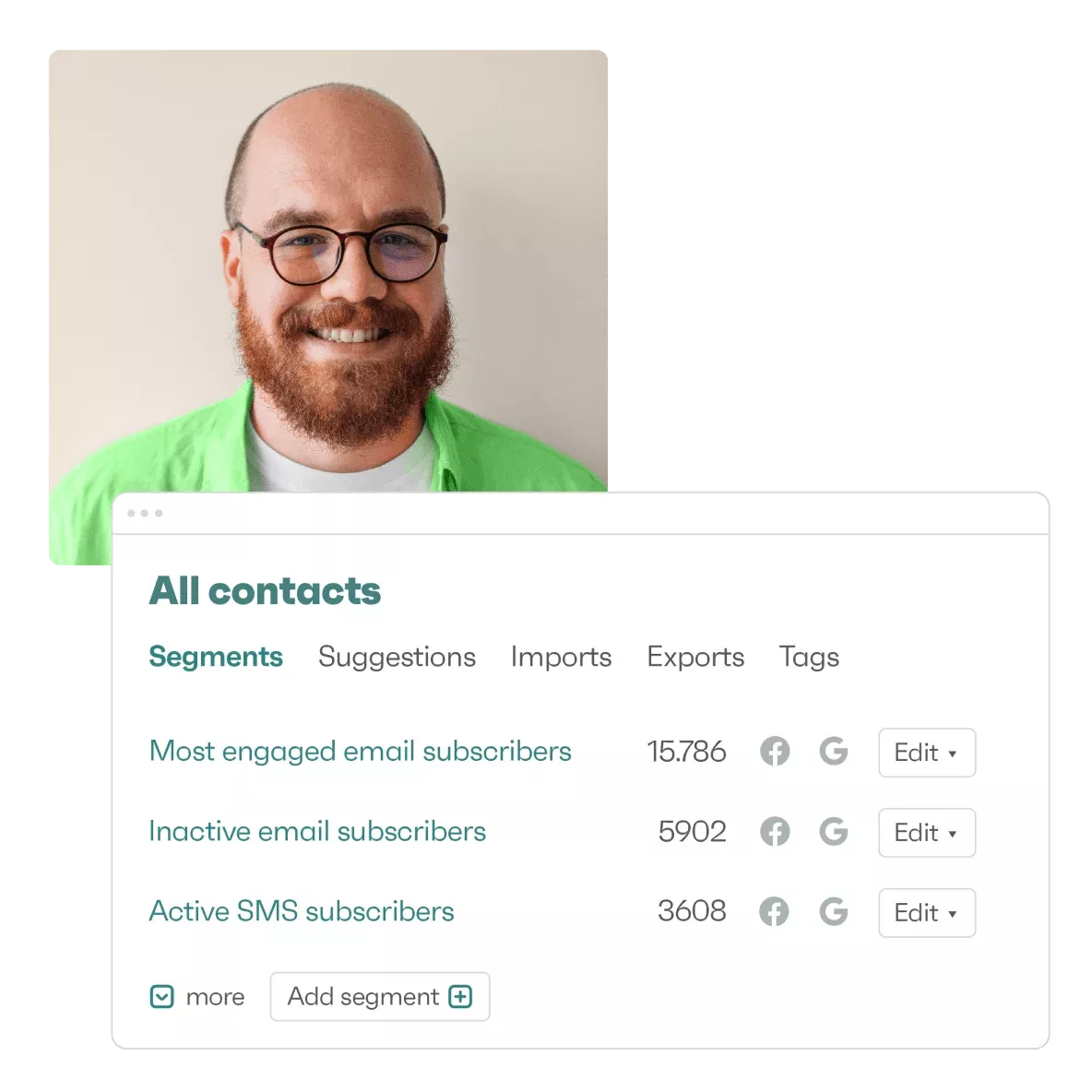
Challenge 5: Measuring ROI from email campaigns
Tracking the real impact of your email marketing efforts can feel like trying to solve a puzzle with missing pieces. Of the common email marketing challenges, effectively measuring ROI is one of the most complex. Connecting metrics to actual revenue requires a more strategic approach.
Start by setting clear goals for each campaign type. Different emails serve different purposes in your customer journey:
- Welcome sequences should focus on first-purchase conversion rates
- Abandoned cart emails need to track recovery rates and recovered revenue
- Post-purchase flows should measure repeat purchase rates
- Win-back campaigns should track reactivation rates and revenue from returning customers
Use UTM parameters consistently in your email links to track how subscribers move from your emails to your website and through your marketing funnel. These tags help you see exactly which emails drive sales and how subscribers interact with your site after clicking through.
Connect your email metrics with your ecommerce platform to understand the full customer journey. This comprehensive view helps you tackle email marketing challenges by showing exactly which strategies drive results and which need adjustment.
Look beyond immediate purchases to measure how email impacts:
- Revenue per email sent
- Average order value from email subscribers
- Time between purchases for email subscribers
- Customer lifetime value of email-engaged customers
Break down your analysis by campaign type and automation workflow to identify which emails generate the highest return. This helps you focus your efforts on the most profitable email strategies and adjust or eliminate underperforming campaigns.
Omnisend’s analytics dashboard gives you a clear picture of your email marketing performance. With this tool, you can track key metrics like revenue, campaign performance, and subscriber growth all in one place:
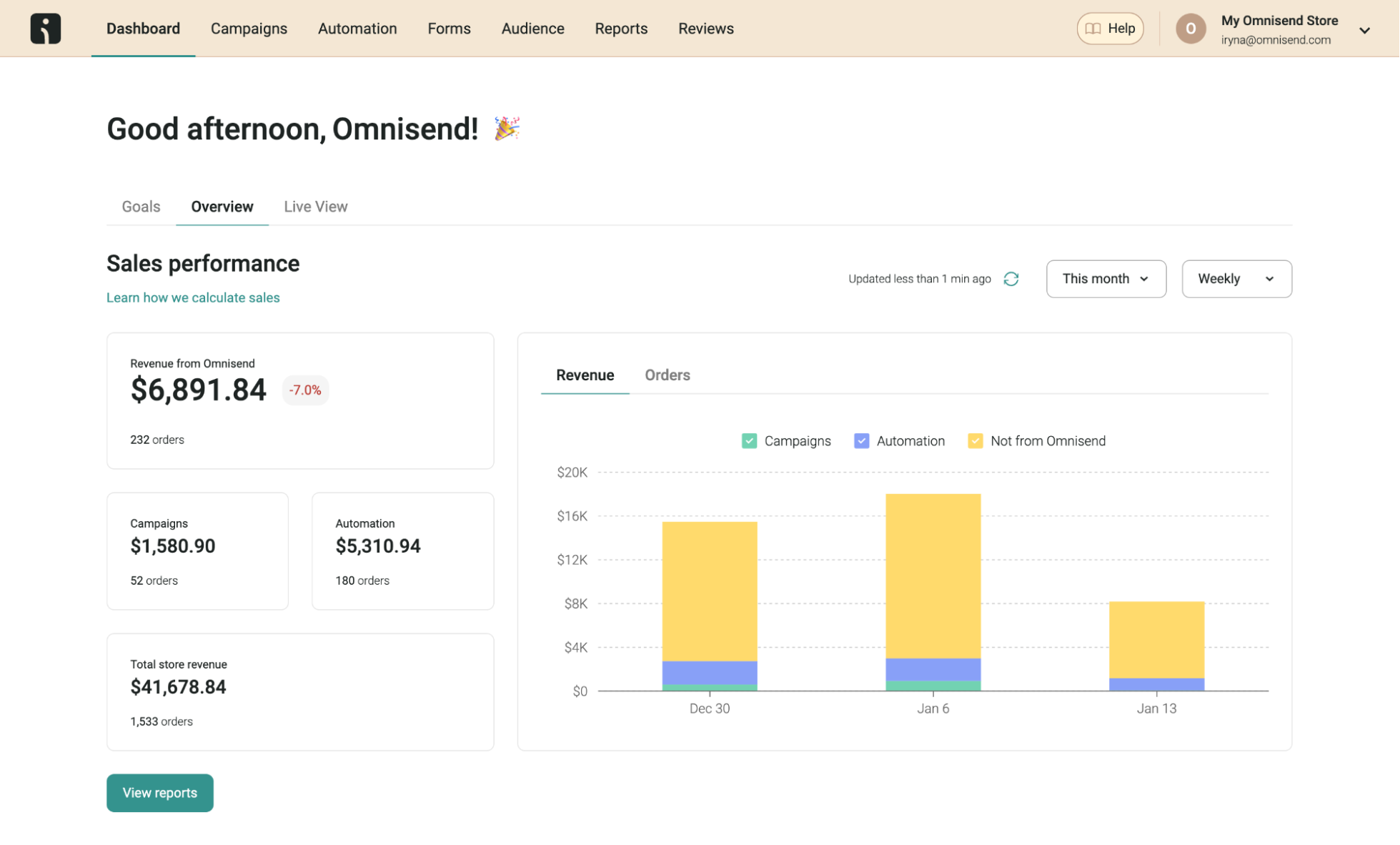
Challenge 6: Maintaining consistent email quality
Consistently sending high-quality emails becomes harder as your email campaign grows. That’s why email quality control remains one of the most overlooked email marketing challenges.
One week, your emails look perfect. Next, they have broken links or misaligned images. These inconsistencies can damage your brand’s credibility and reduce subscriber trust, ultimately affecting conversion rates.
Create a clear email quality checklist that covers essential elements like:
- Brand voice and tone alignment
- Image optimization and alt text
- Proper segmentation settings
- Subject line and preview text
- Personalization elements
- Product pricing accuracy
- Mobile responsiveness
- Clear, compelling calls to action
- Link functionality
- Button visibility
Build a content calendar to plan your emails ahead of time. This helps prevent rushed campaigns that often lead to mistakes. It also helps you maintain a consistent sending schedule.
Your calendar should track everything from product launches and newsletter content to A/B testing schedules. Include your seasonal campaigns and regular promotional emails. Don’t forget to schedule regular updates to your automated workflows.
Leverage templates to save time while maintaining consistency. As one of the most practical solutions to challenges in email marketing, they help you create master formats for different types of campaigns.
You can also check email marketing examples from competitors. Draw inspiration from these examples when you’re out of ideas on keeping your emails at par with quality.
Include locked sections for brand elements like headers and footers to ensure consistency across all sends. For instance, here’s a quick look at one of Omnisend’s email templates that uses brand assets:
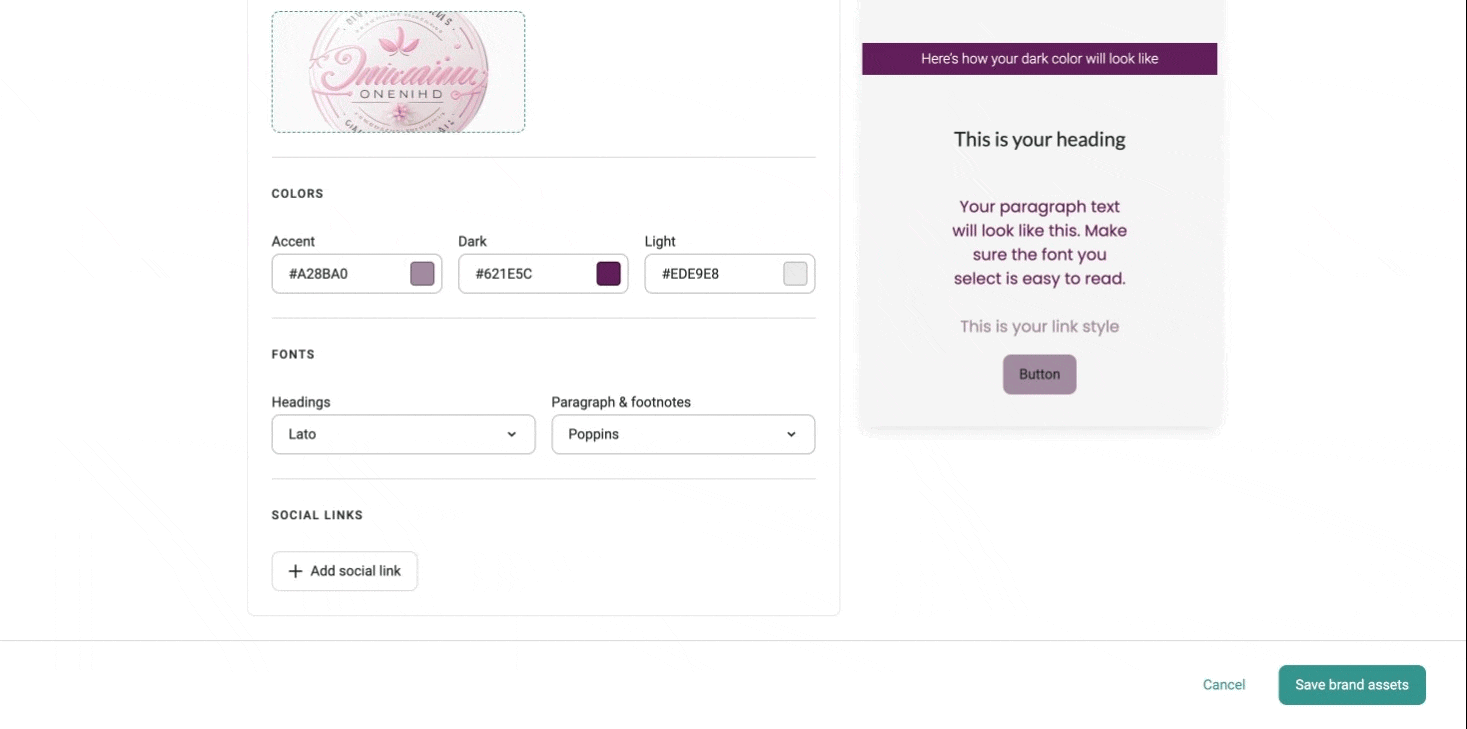
Challenge 7: Complying with email marketing regulations
Email marketing regulations protect consumers’ privacy rights. However, keeping up with these rules across different regions can feel overwhelming. While many email marketing challenges focus on performance metrics, compliance requirements add another critical layer of complexity.
Start with the essential best practices that apply across most email marketing regulations:
- Be transparent about how you collect and use customer data
- Always get explicit consent before adding anyone to your list
- Keep records of when and how subscribers joined your list
- Include your physical business address in every email
- Ensure your unsubscribe process is clear and simple
- Honor unsubscribe requests promptly
Different regions have specific requirements. For example, GDPR compliance in Europe requires separate consent for different types of communication. Meanwhile, the CAN-SPAM Act in the US focuses more on giving recipients the ability to opt out.
If you serve customers in multiple regions, follow the strictest requirements to ensure compliance everywhere.
Not only that, but your email signup forms need special attention. Include clear language about:
- What types of emails subscribers will receive
- How often they’ll hear from you
- How their data will be used
- Any third parties who might access their information
For instance, here’s a quick legal compliance checklist to keep in mind:
- Physical business address
- Unsubscribe link/option
- Accurate subject line
- Permission/consent
- Privacy policy link
- Clear sender identity
How Omnisend helps you solve email marketing challenges
Tackling email marketing challenges becomes simpler with the right tools. Omnisend provides ecommerce businesses with solutions designed specifically to cater to email marketing needs and effectively overcome common email marketing pain points.
Get started quickly with workflows for welcome series, abandoned carts, and order confirmations. This tool helps you address multiple email marketing pain points at once.
Here’s a look at Omnisend’s dashboard showing specific email workflows you can implement:

Also, take control of your delivery with dedicated IP addresses and domain authentication tools. Omnisend helps you maintain a strong sender reputation through built-in list cleaning features and engagement monitoring.
The platform’s segmentation capabilities make it easy to target the right customers with the right messages. By addressing common email marketing challenges through smart automation and personalization, you can create impactful campaigns that drive real results.
Additionally, Omnisend’s trigger-based automation allows you to set up targeted workflows that respond to specific customer actions — whether it’s browsing behavior, cart abandonment, or purchase history. You can also automatically send relevant messages when your subscribers are most likely to engage.
Segments can be created based on purchase history, browsing behavior, and engagement levels to improve your campaign performance. It’s also worth incorporating dynamic email content that adapts automatically to show each subscriber relevant products and offers.
Finally, track your success with clear, actionable analytics that show exactly how your emails impact sales. Connect your store to see real revenue numbers, not just open and click rates, allowing you to focus on strategies that drive actual growth.
Conclusion
Email marketing challenges shouldn’t hold your ecommerce business back from reaching its full potential. By focusing on delivery, engagement, personalization, and compliance, you can build an email program that drives significant results.
Start by tackling one challenge at a time, measuring your progress, and adjusting your strategy based on what works for your specific audience.
Remember that these email marketing challenges are opportunities to improve your connection with customers and grow your business. With the right approach and comprehensive email marketing tools like Omnisend, you can turn email into one of your most valuable marketing channels.
Quick sign up | No credit card required
TABLE OF CONTENTS
TABLE OF CONTENTS


No fluff, no spam, no corporate filler. Just a friendly letter, twice a month.

 OFFER
OFFER







